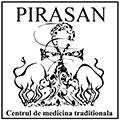Chances of full recovery from cervical cancer are increased by an early diagnosis and a proper treatment. Thus is also avoided the surgical removal of the affected tissue by hysterectomy or by other procedures affecting the integrity of the genital apparatus. Age permitting, there are chances in some cases for a female patient to be able to conceive children after completing her treatment.
The diagnosis is assessed upon the results of Papanicolaou screening test, of the biopsy of the tumor tissue and of other imaging investigations. Cervix cancer develops from various forms of cervix interepithelial neoplasia. The respective cervix lesions are caused by infections by various stems of HPV (Human Papiloma Virus). In the conditions of a normal immunity, HPV is eliminated from the body. Yet in specific situations, the immune barrier is destroyed and the virus attacks the cervix cells, causing genetic mutations that will turn the healthy cells into malignant ones. The displasic lesions carry a high risk of turning malignant, gradually causing superficial cervix ulcerations or vagina-oriented tumors.
The most frequent form of cervix cancer is the epidermoid carcinoma, accounting for over 85 % of the cases. The rest of 15% comprise various other forms, especially adenocarcinomas (epithelial tumors of glandular origin). After the histopathological confirmation of the diagnosis, follows the assessment of the stage of the disease: stage I – malignant process located only at the uterus level; stages II and III – extended malignant process, located also in the urinary bladder or the rectum; stage IV – extended malignant process, located also in the urinary bladder or the rectum with metastases in other organs (the pelvic, lomboaortic, mediastinal and supraclavicular ganglions; liver; lungs; skeletal system).
Symptoms
In its early stages, the cervix cancer is asymptomatic or it shows minor symptoms. In the more advanced stages, there is spontaneous bleeding after intercourse or/and between menstruations or after the onset of the menopause, vaginal discharges or bad smelling bleeding, discomfort and pelvic pain during intercourse. The lumbar pains, the renal and the lymphatic deficiencies as well as the edemas of the lower limbs occur when there is a major tumor formation with tendencies to necrosis.
Aiding Factors and Causes
Among the aiding factors allowing the HPV stems to infect the cervix, there can be mentioned: a poor intimate hygiene, a poor immunity, an early debut of the sexual life, multiple sex partners, sex partners who had sexual relations with HPV infected persons, untreated or inappropriately treated sexually transmitted diseases, administration of certain hormonal contraceptives for longer than 5 years, many abortions or multiple child deliveries.
The cervix neoplasias may also be triggered by an endocrine misbalance obstructing the elimination of the dead cells from the area of the genital apparatus. These cells are eliminated by menstruation. When the menstrual rhythm is disrupted by abnormal hormonal values, the respective dead cells “choke” the healthy cells around them. The local metabolic deficiency causes an alteration of the genetic material that will be transmitted to the next generations of cells. These ones will develop a malignant behavior and they will produce the specific cervix cancer lesions.
Prevention
Sexual education is one of the elements of a healthy life. The notions of intimate hygiene are very important for the health of the genital apparatus. Each woman should frequently take vaginal washes by herbal teas such as watercress, all-saints’-wort and chamomile. These washes should be repeated after each intercourse. Periodical gynecological examinations are recommended in order to detect cervix lesions, especially after the debut of sexual life. These intimate hygiene rules should be observed especially by the women older than 35.
Treatment
Treatment of cervix cancer by traditional therapies involves removal of the existing cancer cells and their replacement by healthy ones. Acupuncture procedures guide a continuous energy stream toward the cancer area. The active principles in herbs cleanse the cancer area and they stimulate the production of antibodies that will “digest” the malignant cells. The same active substances, along with the antibodies, will also cleanse the body of malignant cells disseminated by blood or lymph. Simultaneously, there is a process of healthy cells formation based on the gene information taken from a healthy cell. The newly formed cells will gradually replace the malignant ones, allowing the affected body to recommence its activity.

